Enoura Observatory, Odawara Art Foundation
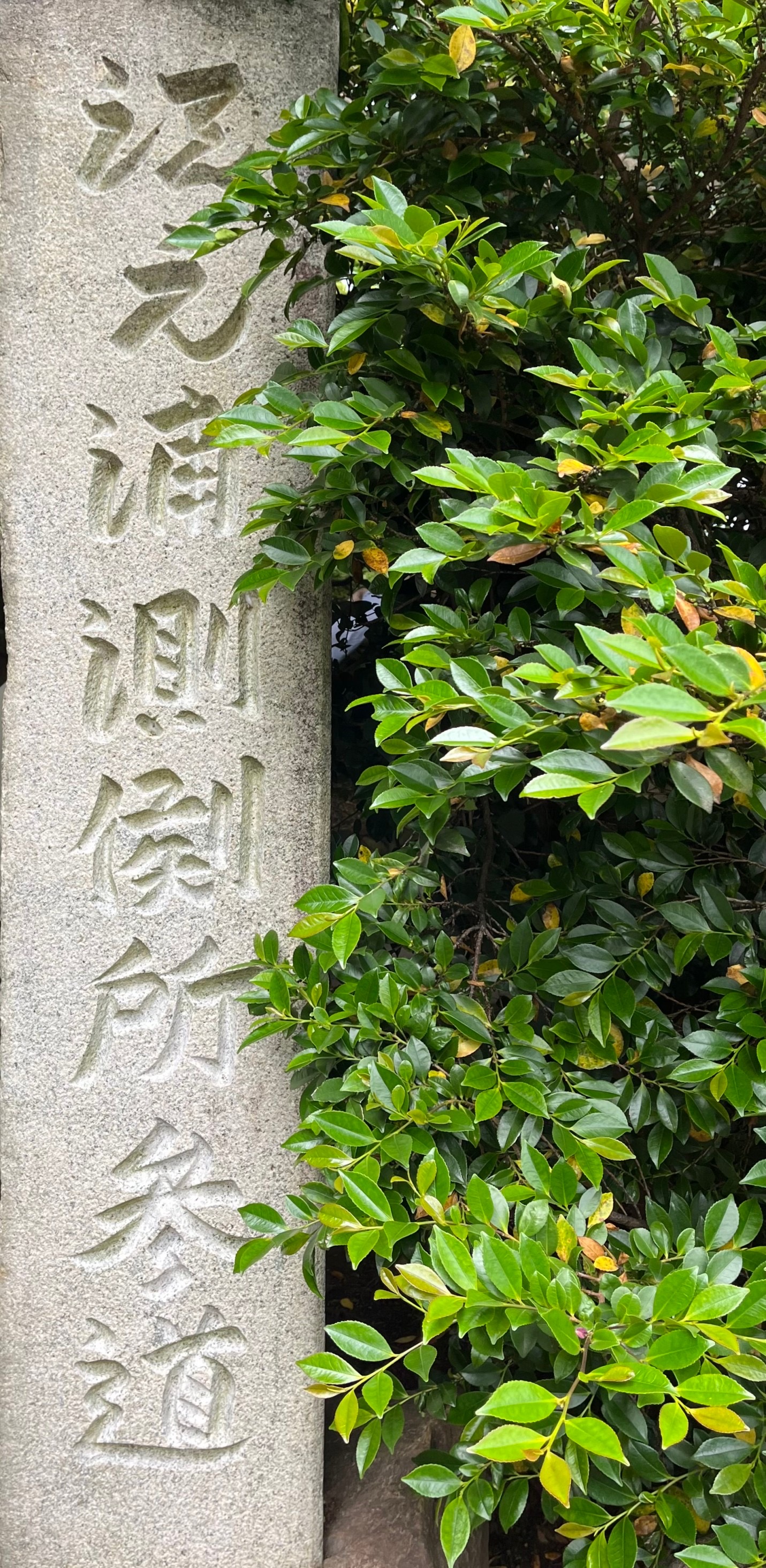
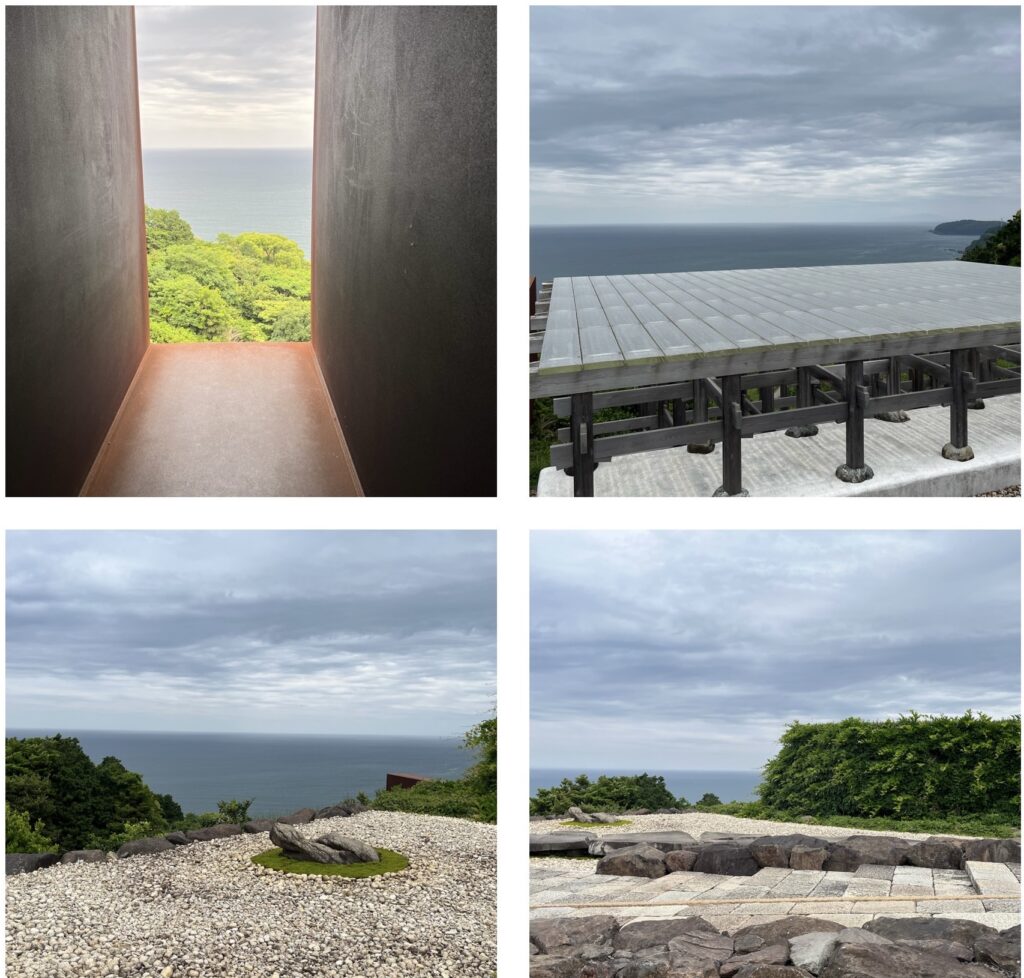
Architects and art lovers – this is the place for you!
Enoura Observatory, Odawara Art Foundation, is located on a hill amid citrus groves with a panoramic view of the Sagami Bay and the Hakone Mountains in the background. It is an outdoor museum with contemporary art installations and a range of Japanese architectural styles. Here the past blends into the present – from ancient, medieval to contemporary in harmony with nature.
Hiroshi Sugimoto – a labor of love and inspiration
The Enoura Observatory, Odawara Art Foundation, is the brainchild of Hiroshi Sugimoto, a world-renowned contemporary artist, architect, photographer, and sculptor. It was founded in 2017 to showcase Japanese culture and art in a natural setting.
Sugimoto is famous for his Glass Tea House Mondrian which is permanently installed on the art island of Naoshima now and was first displayed at the Venice biennale in 2014. Traditional tea ceremonies were staged inside this glass tea house at the biennale.
In San Francisco, a new monumental sculpture titled “Point of Infinity” was placed on top of Yerba Buena Island in summer 2023 – Sugimoto’s first large scale public sculpture to be installed in the United States.
In Washington the Smithsonian’s Hirshhorn Museum and Sculpture Garden is undergoing the largest renovation in its history with Sugimoto’s Scupture Garden renovation in progress now.
The tour
We joined an architectural tour organized by AIA Japan (the American Institute of Architects in Japan ) in late May and we were lucky to have Ms. Haruko Hoyle, the Director of the Odawara Art Foundation, give us a 2- hour guided walking tour of the museum. She was an excellent and knowledgeable guide and made our visit so much more enjoyable and informative.
While exploring the Enoura Observatory, you are struck by all the stones lining the paths and stone sculptures from around Japan. At one particular place, Ms. Hoyle pointed out to the stones from 1700 years ago and 700 years ago lined up side by side to each other, transcending historical periods. We felt Mr. Sugimoto’s passion for stones by stepping on these stones that are 1000 years apart.
Ms. Hoyle told us that Bono of U2, who is a friend of Hiroshi Sugimoto, had visited a couple of weeks prior and enjoyed his visit so much that he said he will be back with his band mates! You will probably want to join his band mates to experience the artistic and natural beauty of this museum.
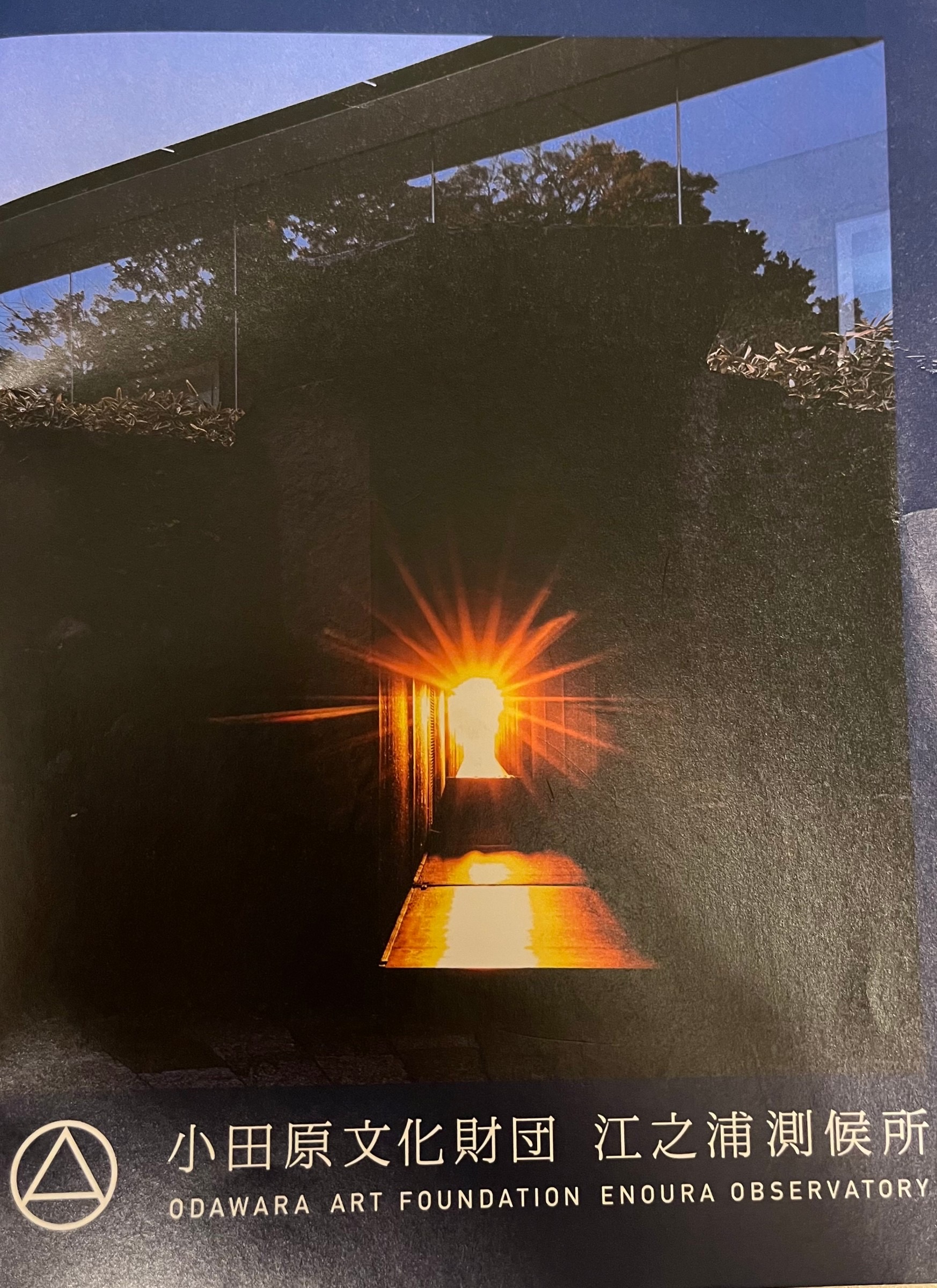
If you are going on a self-guided tour, refer to the guidebook which will point out the various stone and wooden installations that blend so well into the terrain and natural surrounding. If you don’t pay attention you can easily miss them.
Comfortable walking shoes are recommended – some areas may be restricted when it is raining or if the paths are wet and slippery
After walking around the vast grounds, take a break at the Stone Age cafe which is open on weekends and national holidays. Definitely try the fresh juices and sweets made from citruses that are grown in the area while sitting on stone counters, tables and stools. The stones are from different areas and periods.
Summer solstice light-worship gallery
The gallery is 100 meters long and 100 meters above sea level and frames the sun at dawn. Big glass windows line one wall and the other wall is covered in Oya stones. At the end of the gallery is an observation deck where you are treated to a breathtaking view of Sagami bay with Boso Peninsula and Oshima Island in the distance. It is aligned to the sunrise on the summer solstice when the sun’s rays take several minutes to illuminate the entire length of the gallery.
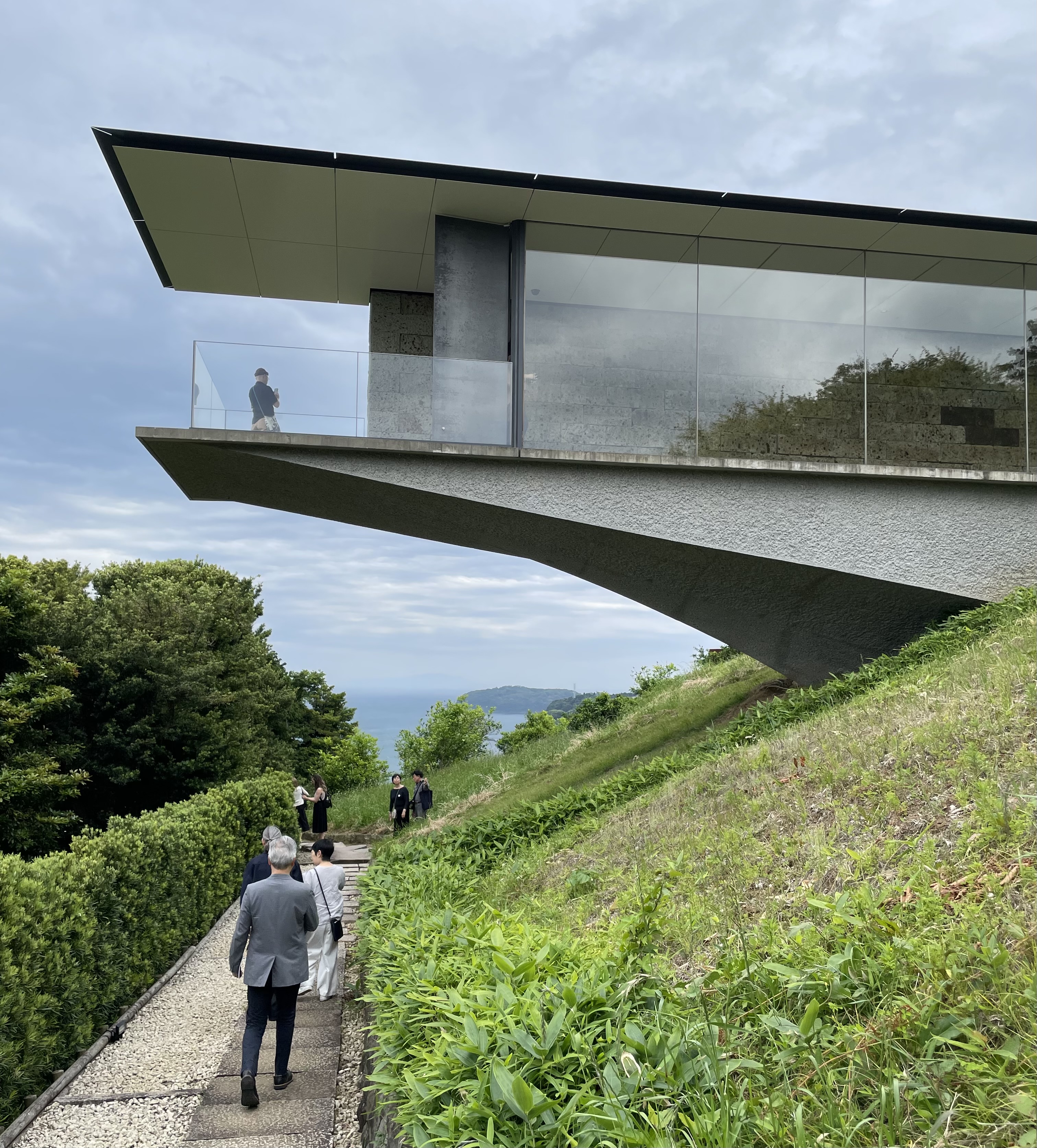
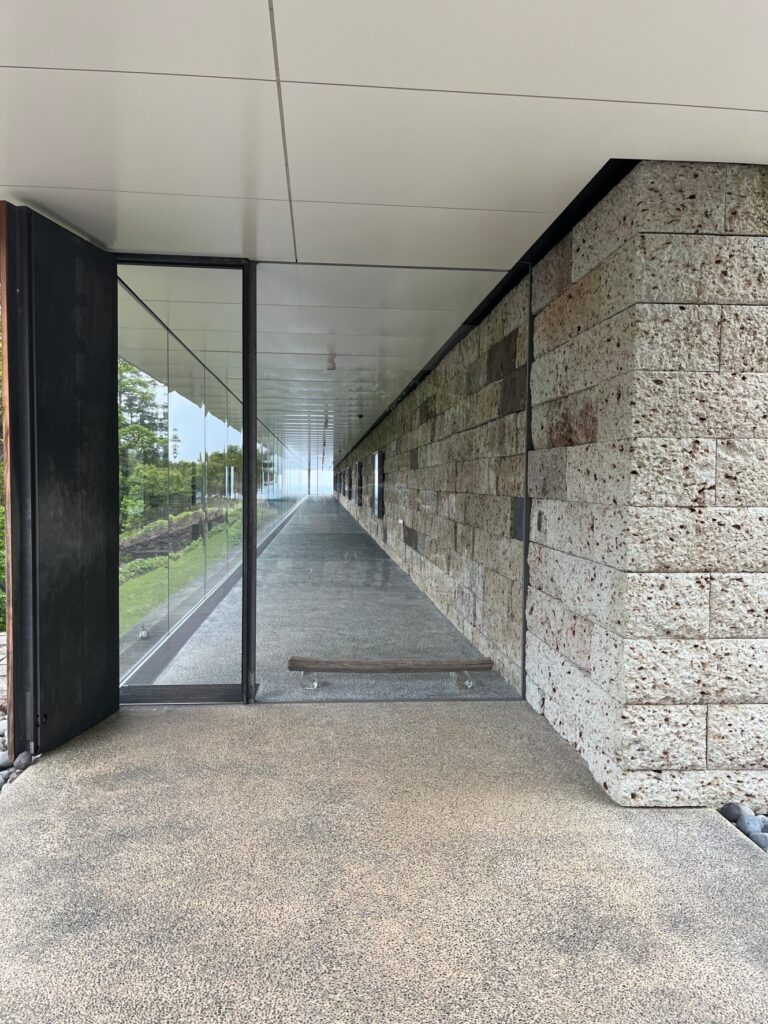
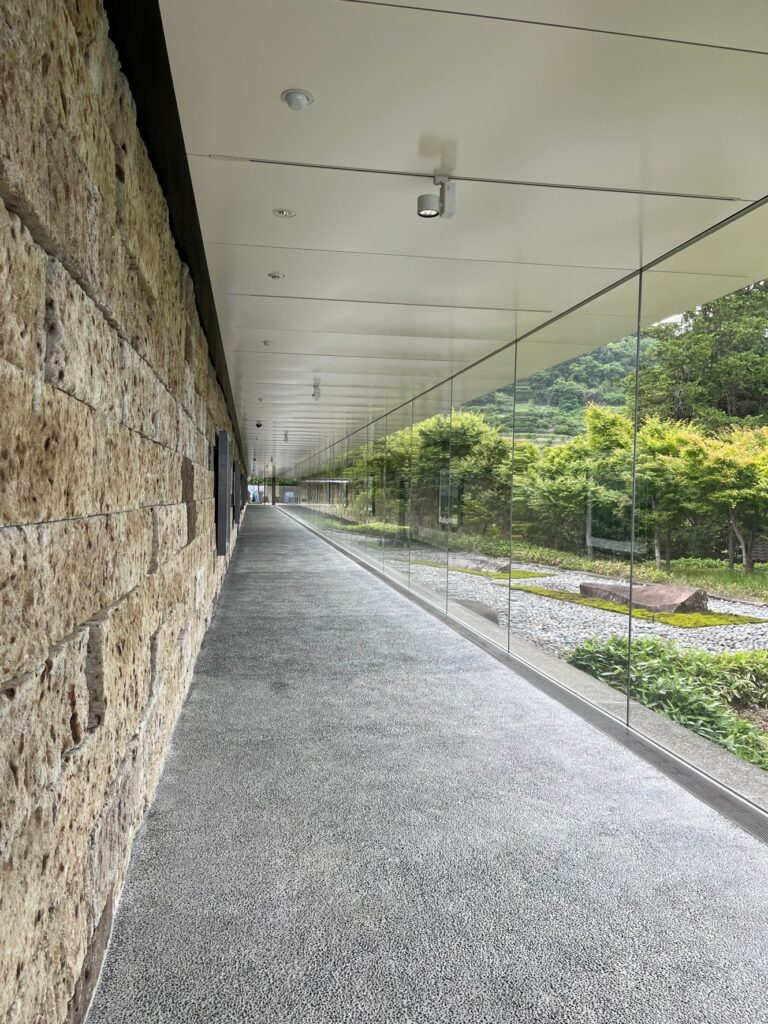
Winter solstice light-worship tunnel and optical glass stage
At sunrise, the sun lights up the 70-meter steel tunnel and illuminates a large stone at the other end on the winter solstice.
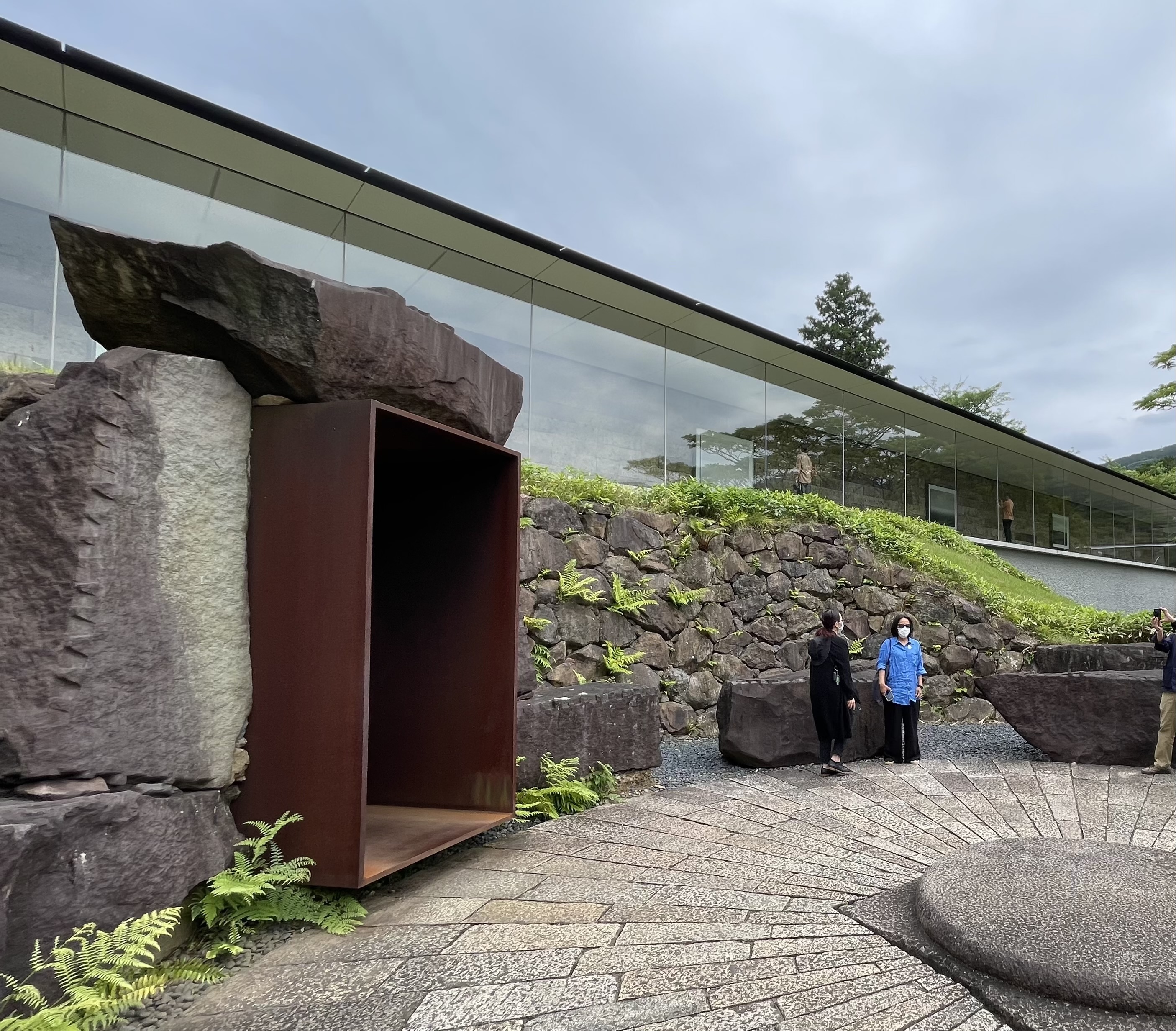
The optical glass stage sits on a framework of Hinoki cypress similar to that of the famous Kiyomizu Temple in Kyoto. In front of the stage are amphitheater-style seats. Special events such as Noh and Kabuki performances have been held here. According to the description on the guide book, “On the morning of the winter solstice, the optical stage glows at it catches the light on its cut edges. To the audience, the glass stage appears to be floating on the surface of the sea.” It sounds magical at any time of the year!
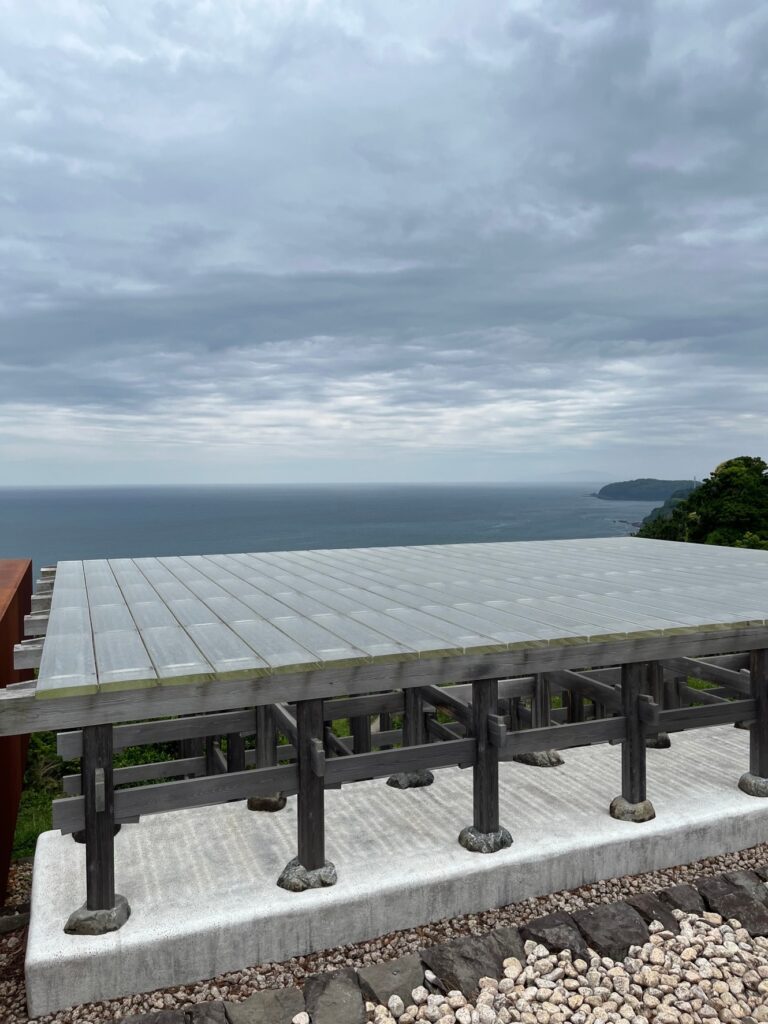
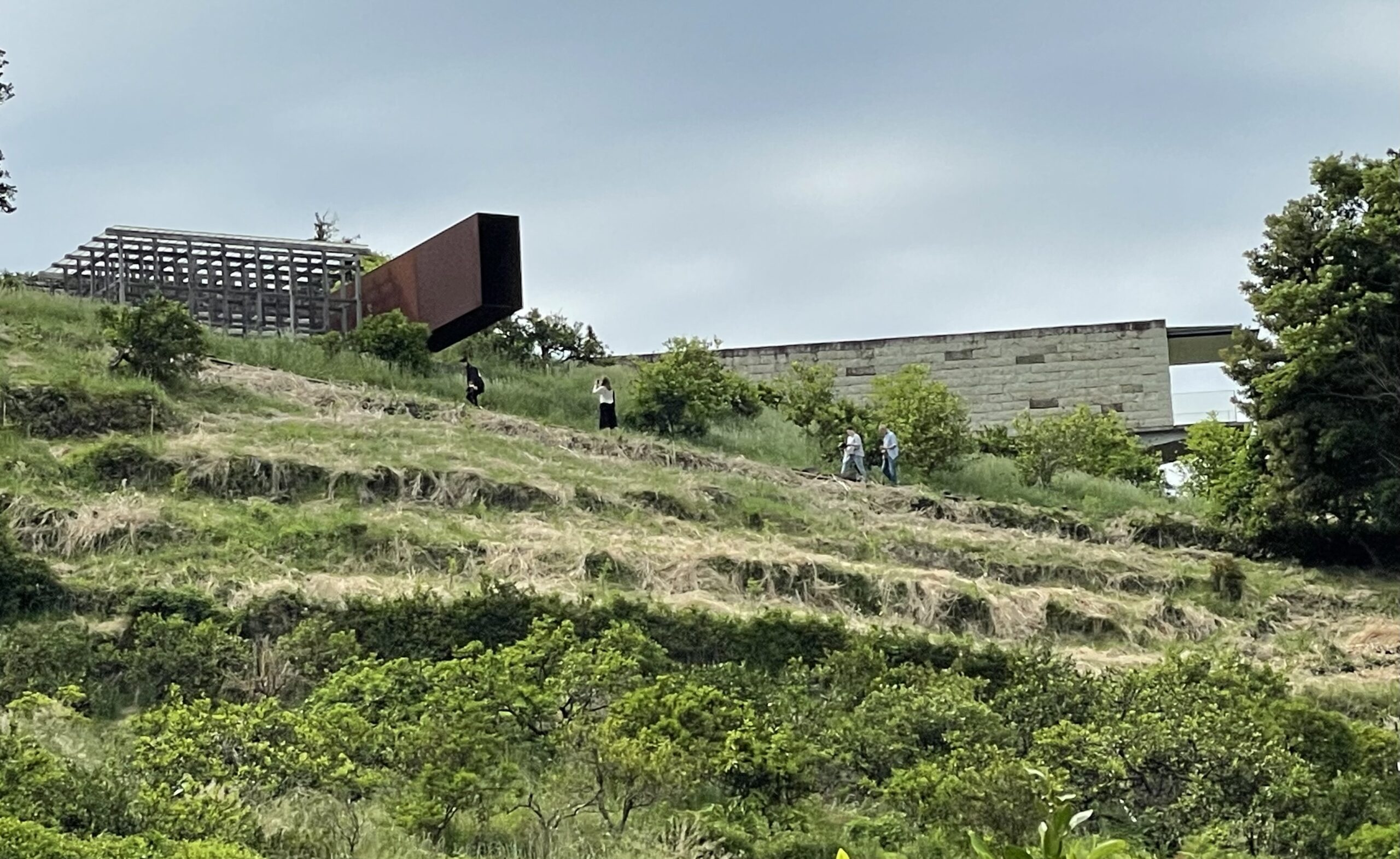
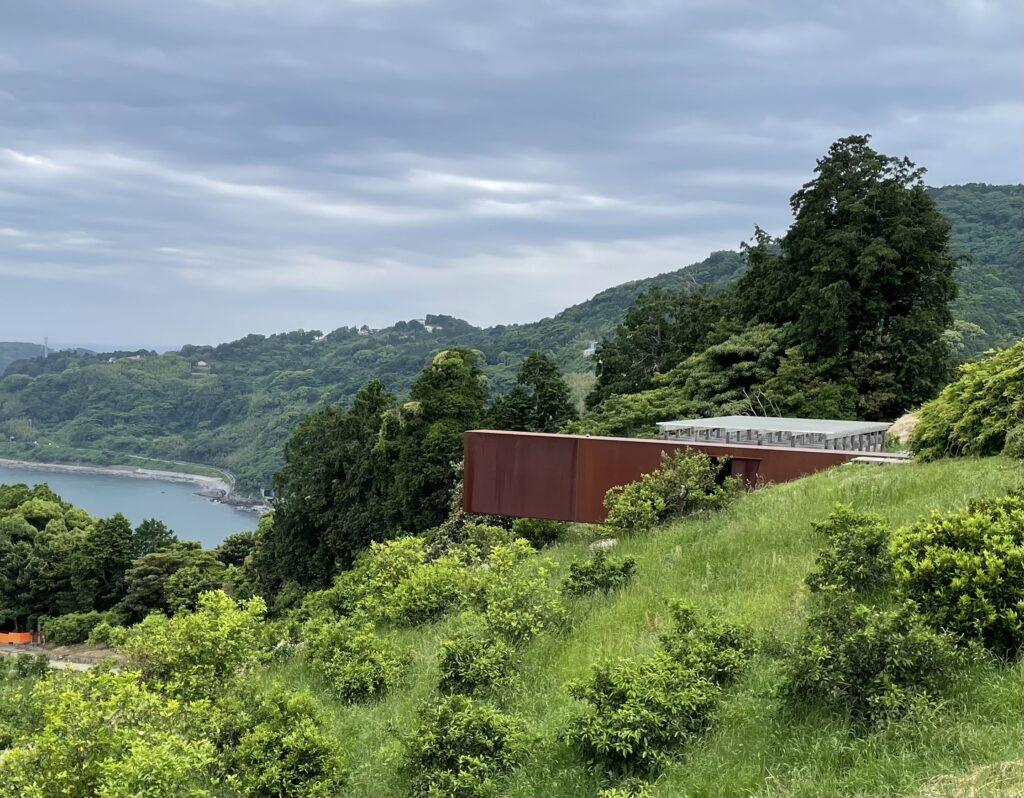
Gates and shrine
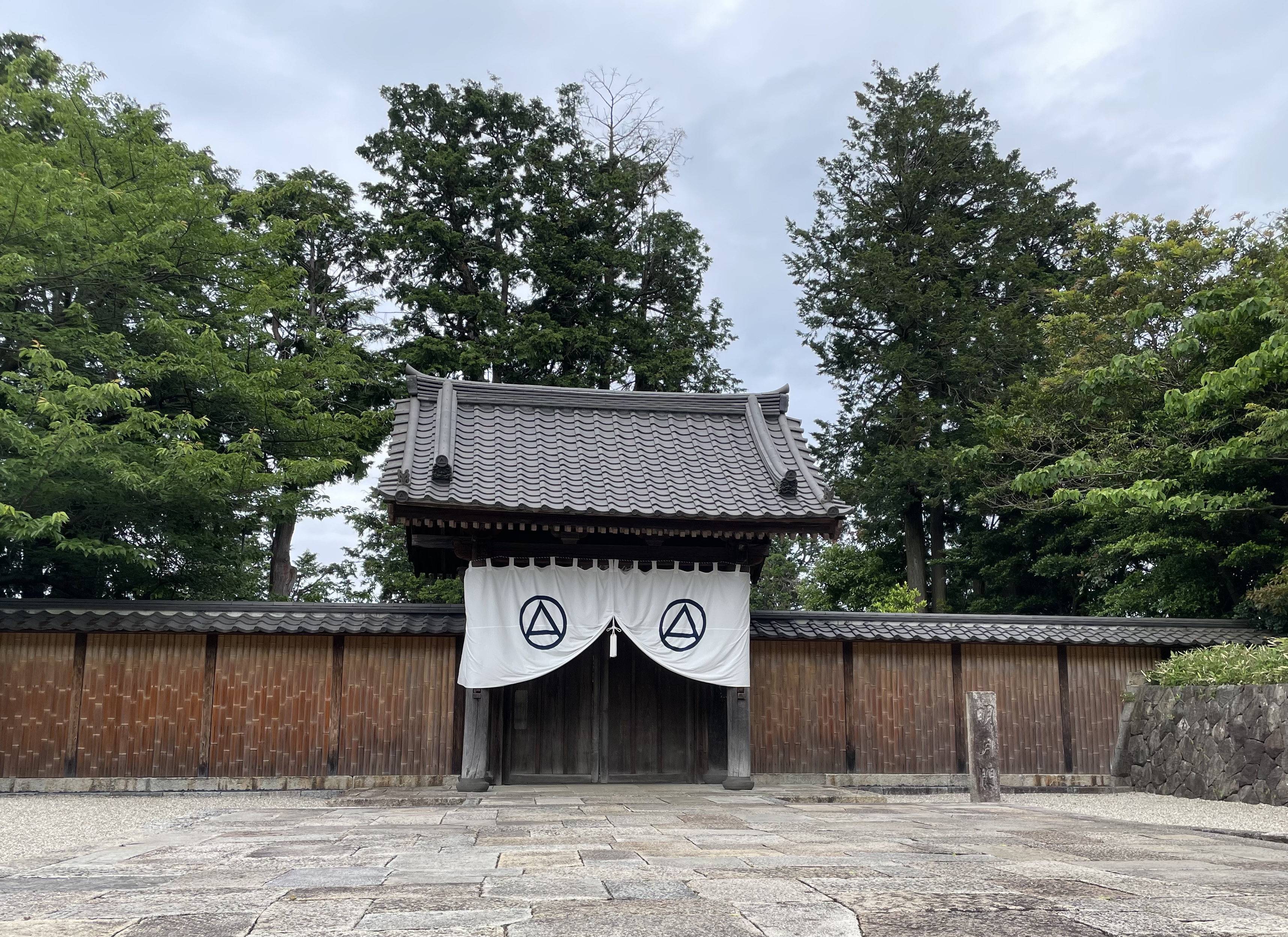
The Meigetsu Gate was the front gate of the Meigetsuin Temple, famous for its hydrangeas, in Kamakura. Subsequently, after sustaining damage and restored, and changing ownership several times, it served as the gate of the Nezu family’s residence in Tokyo which later became the front gate of the Nezu Museum. When the Nezu Museum was rebuilt in 2006, the Meigetsu Gate was given to the Odawara Art Foundation.
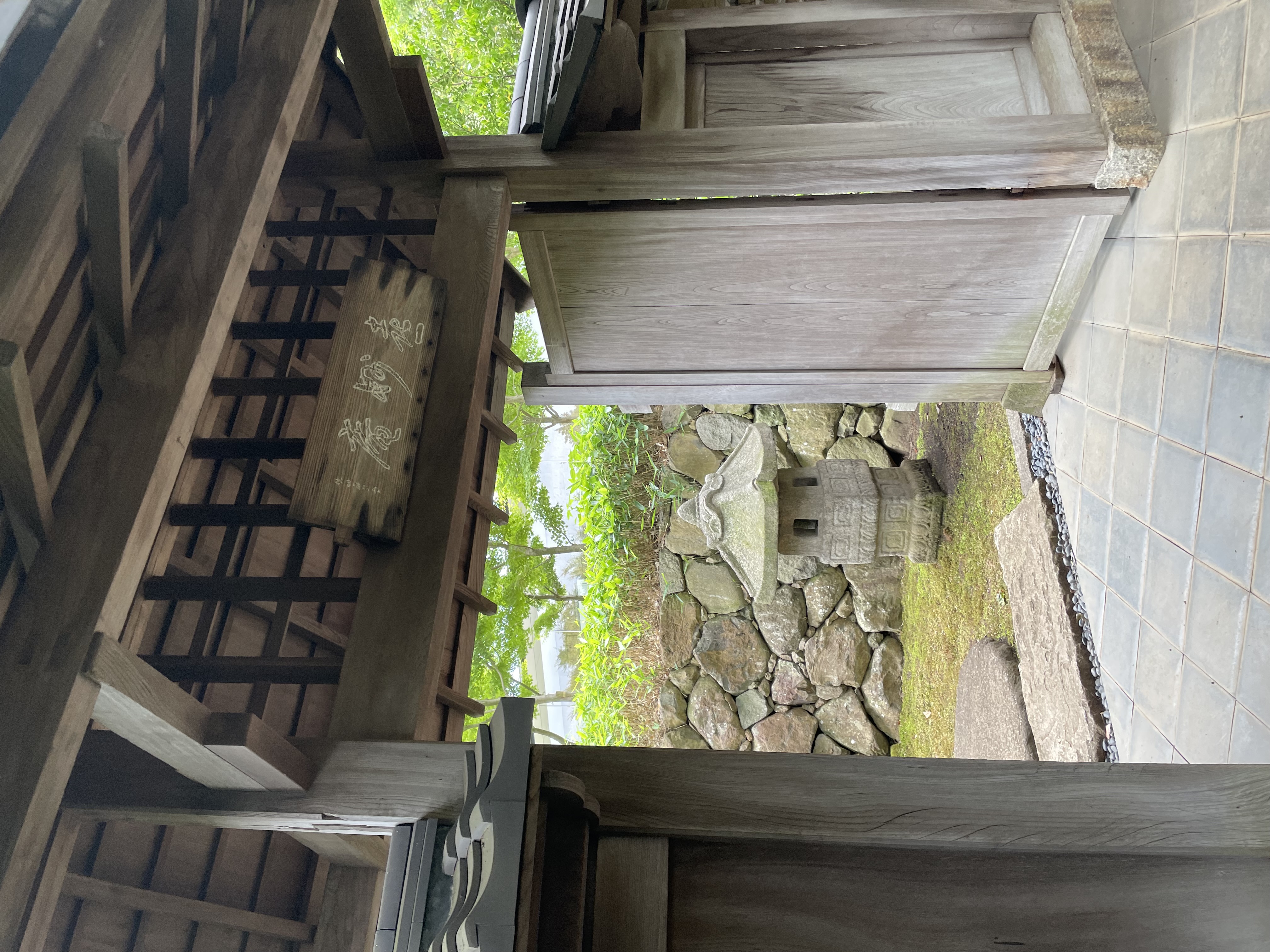
The Old Naraya Gate dating from around the time of the Great Kanto Earthquake (1923) was at a famous traditional inn in Hakone. After the closing of Naraya in 2001, it was relocated to Odawara.
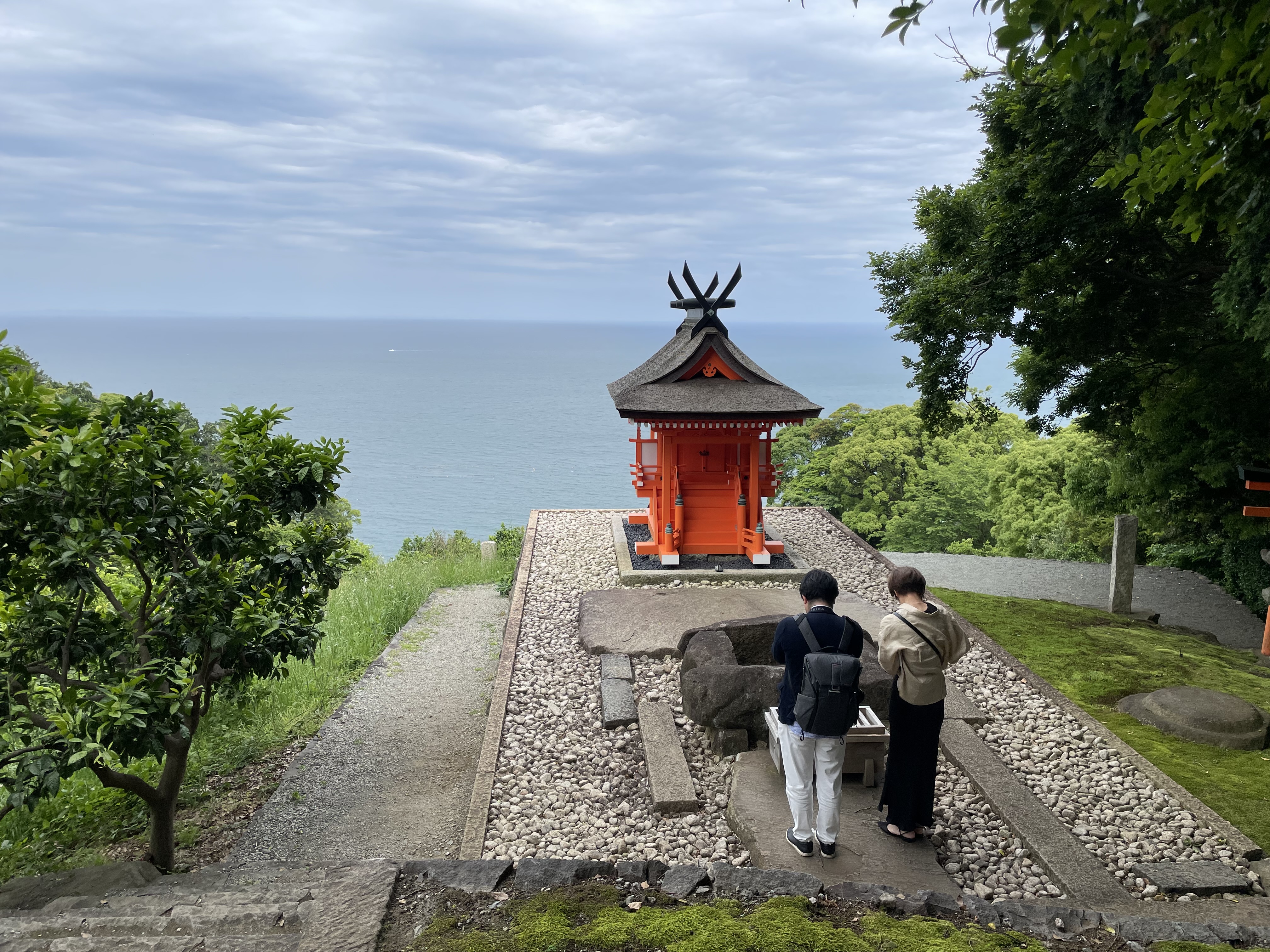
The exact copy of the Kasugado at Enjo-ji Temple in Nara was brought here in 2022. The foundation stone was excavated from the ruins of a temple from the Nara period (710-794).
Garden and bamboo grove
Within the spacious complex there is a strolling garden where you can enjoy seasonal plants and flowers, especially the cherry blossoms in the spring. On the day of our visit, hydrangeas were starting to bloom.
There is also a bamboo grove. The highlight of the bamboo grove area is an installation called “Mathematical Model 0010”, similar to the “Point of Infinity” in San Francisco. In this area, there is also a shed where fossils from multiple eras and excavated items are on display.
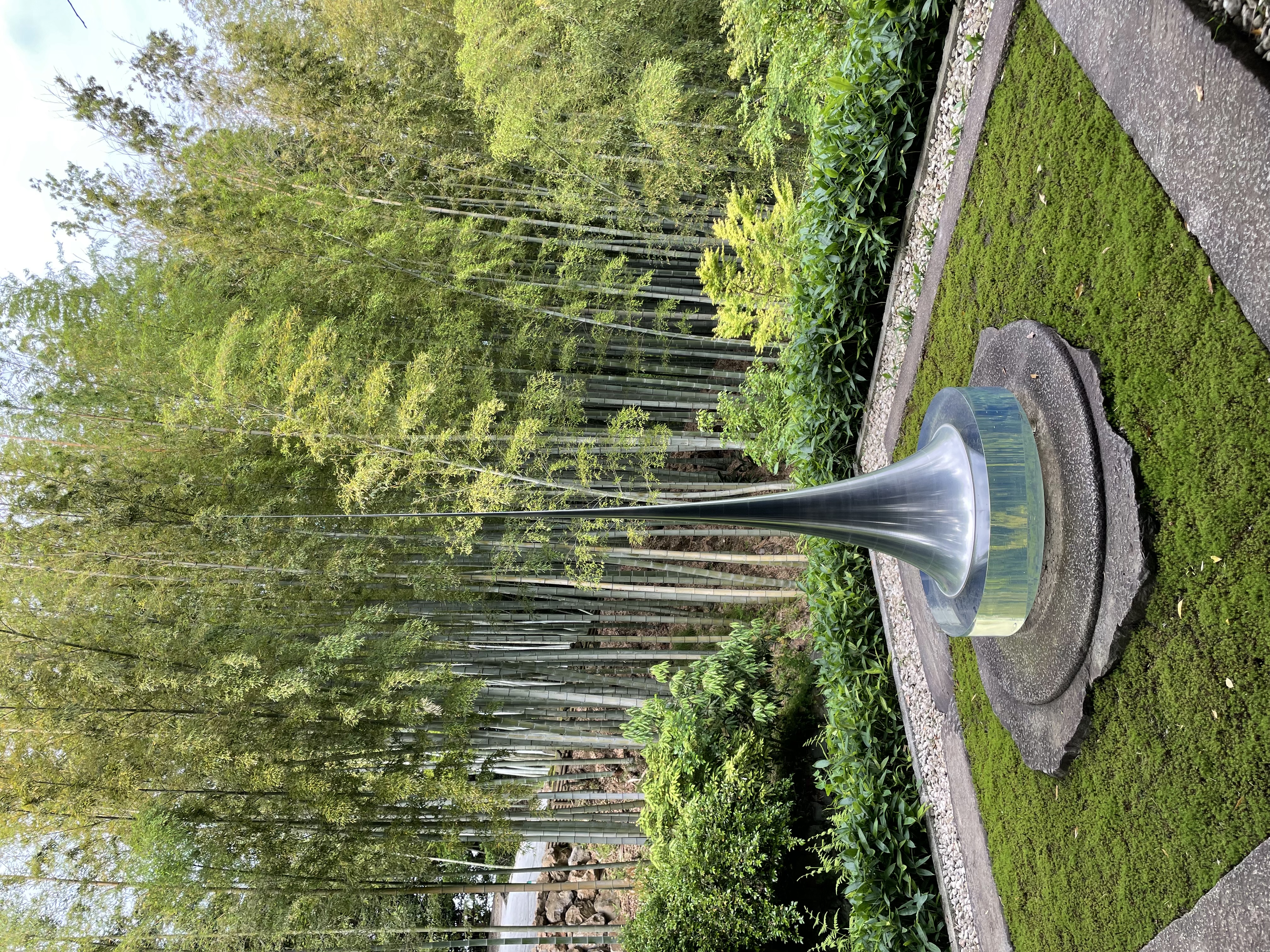
Especially awe-inspiring, was the body of an irradiated two-story stone pagoda that was near Ground Zero when the atomic bomb was dropped on Hiroshima on August 6, 1945. It stands as a reminder of the destructive effects of the atom bomb and a memorial to the victims.
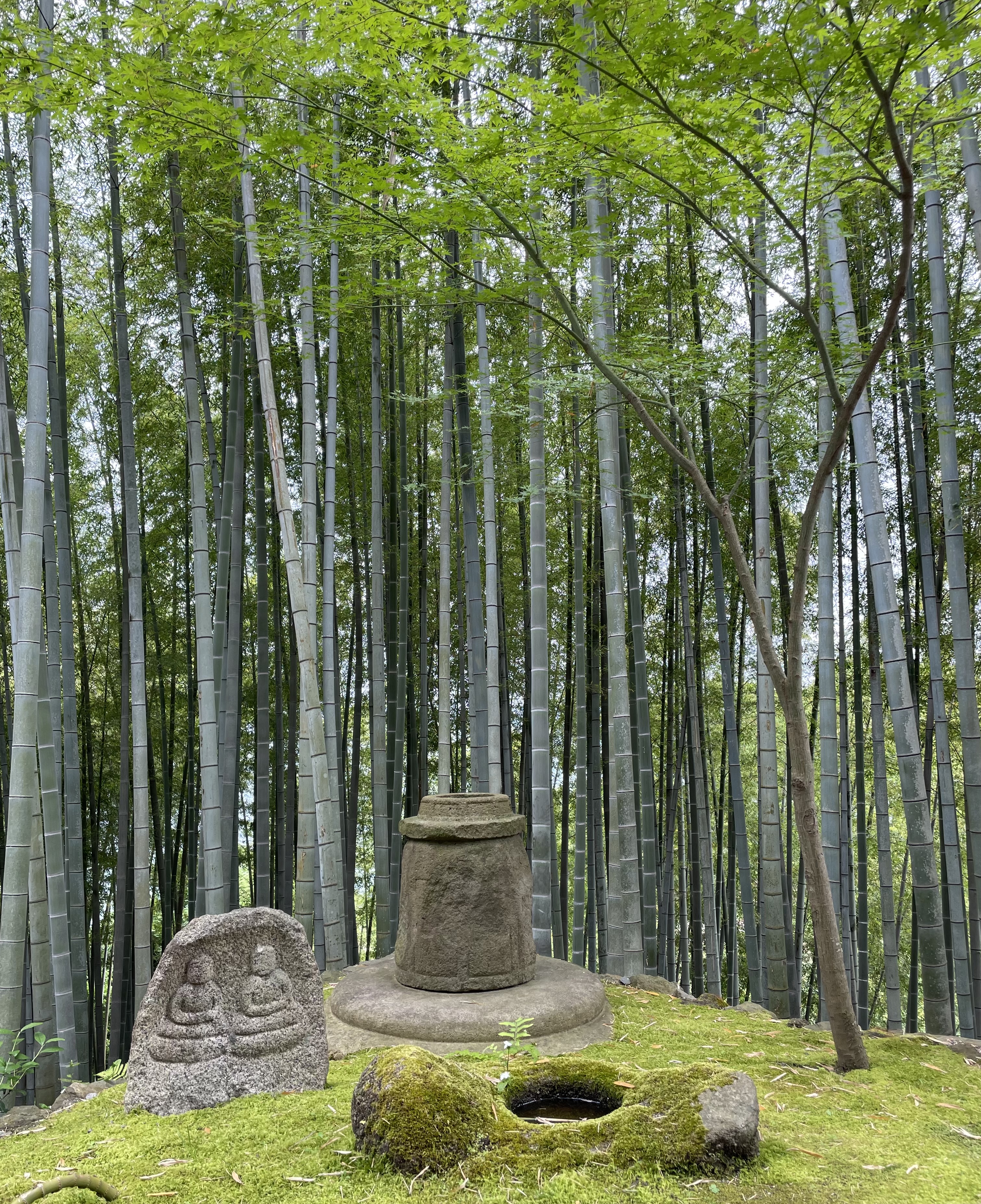
Reservations
Reservations can be made online at:

Reservations must be made at least two days prior to the visit.
Morning admission 10:00 am – 1:00 pm
Afternoon admission 1:30 pm – 4:30 pm
Special evening admission 5:00 pm – 7:00 pm in August on Sat, Sun and Mon.
Admission price: ¥3300 for morning and afternoon admissions, ¥2200 for evening admission.
If there is space, tickets are sold on the day of the visit. Inquire by calling the Odawara Art Foundation office at 0465-42-9170 in the morning.
Closed: Tuesday and Wednesday, New Year’s holidays and temporary closures
Visitors must be 12 years old or older for safety reasons and due to the unique nature of the complex.

Access
JR Tokaido Line Nebukawa station or Manazuru station
Get on the JR Tokaido local line from Tokyo station (about 90 minutes) or Yokohama station (about 60 minutes) to Nebukawa or Manazuru.
If you want to travel faster and shave approximately 40 minutes off your traveling time from Tokyo, take the JR Tokaido Shinkansen – Kodama trains only (some Hikari trains) – from Tokyo to Odawara station and then transfer to the regular JR Tokaido line to get to Nebukawa or Manazuru stations.
Free shuttle bus service between the Enoura Observatory and Nebukawa Station – about 10 minutes. When you buy your ticket online reserve a seat.
From Manazuru station take a taxi, approximately 10 minutes. Taxi fare ¥1800-¥2000.
If coming by car, limited parking available – reserve a parking space when booking your ticket.
Address: 362-1 Enoura, Odawara, Kanagawa 250-0025 Japan
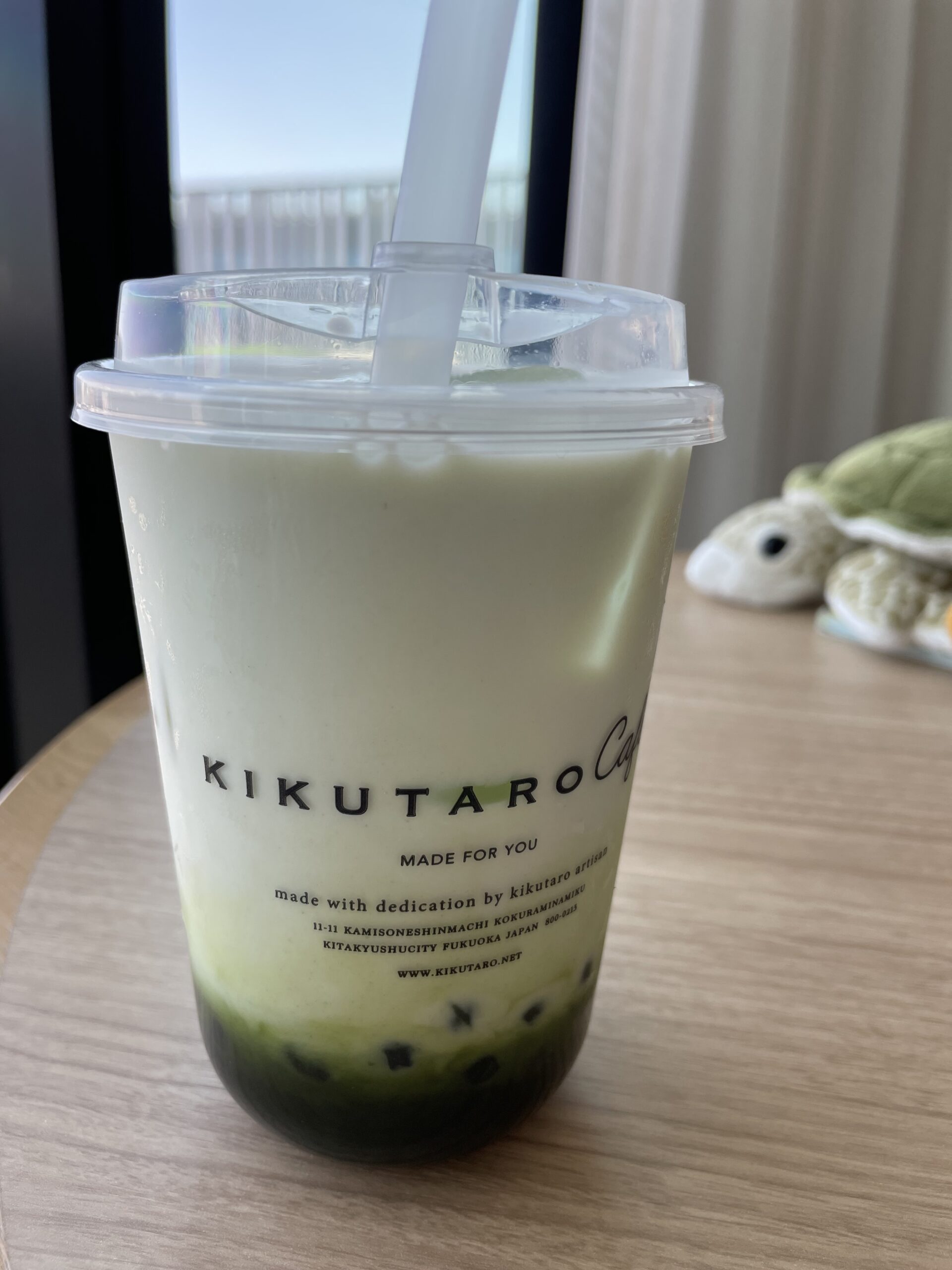

コメント